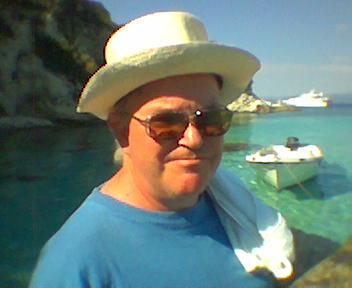|
<< -- 2 -- Malcolm Miller THIRTY-TWO SONATAS A DAY

A recital programme of eleven Beethoven sonatas is certainly a rarity, if
not unique, and with Jacobson's arresting, evocative and brilliant
performances, the concert as a whole was a most moving, and breathtaking,
experience. The highlight for me was a magnetic and involving Appassionata as well as the final E minor sonata with its lyrical beauty. The chronological (published) sequence fell naturally into contrasting groups, the first including Opp 31 Nos 2-3 which contrasted the D minor's riveting turbulence with the E flat's brighter intensity. The ensuing two Op 49 sonatas, composed somewhat earlier, provided 'light relief', Beethoven's charm and playfulness, his classical influences, were conveyed with characterful elegance. There was an especially cheery and relaxed mood in the G major sonata that Jacobson admitted was the first sonata he had ever learned. A more serious mood coloured the next group of three, Opp 53, 54 and 57. The energy of the first movement of the Waldstein, taken at a tremendous pace (time is of the essence in marathons and this helped authentic tempi), was combined with a wonderful mellow timbre from the Fazioli piano; as in the Appassionata that followed, there was never an ugly sound, even in the strongest of fortissimi, whilst the resonance of the pedalled rondo finale of Op 53, and the serene calm of the variation slow movement of Op 57, evinced expressive nuances of shading. In the Appassionata Jacobson found renewed vigour and inspiration: it was an enthralling account which seemed to stretch every mental and emotional sinew. Op 54 formed an ideal contrast between these two monumental sonatas, its more relaxed yet flowing energy controlled and coloured with much subtlety.

Julian Jacobson
|
Jacobson joked that the beginning of Op 78 was Beethoven's way of being nice to the piano after the violence of Op 57, and his caressing touch brought supple richness to this less often played sonata in F sharp, with its bristling effervescent vivace finale. Its companion work, the sonata Op 79 in G, was projected with wit and delicacy, with an attractively soulful slow movement, and a charming, lyrical finale. These two sonatas suggested a return to classical proportions after the expansion of Op 57, and highlighted the far more romantic experimentation of the sonatas Op 81a and Op 90. The changing harmonies of the famous motto in Les Adieux were evocatively depicted, while every gesture seemed personal and communicative. A tiny memory slip at the start seemed put in deliberately just to remind the audience that this was a human endeavour, for the rest of the thirty-two sonatas were delivered note perfectly, and with great beauty of tone, underlining not only Jacobson's exceptional intellect but his incredible insight resulting from lifelong immersion in Beethoven's music, qualities which deserve exposure to a far wider public. One awaits Jacobson's next marathon with interest and eagerness.
|

